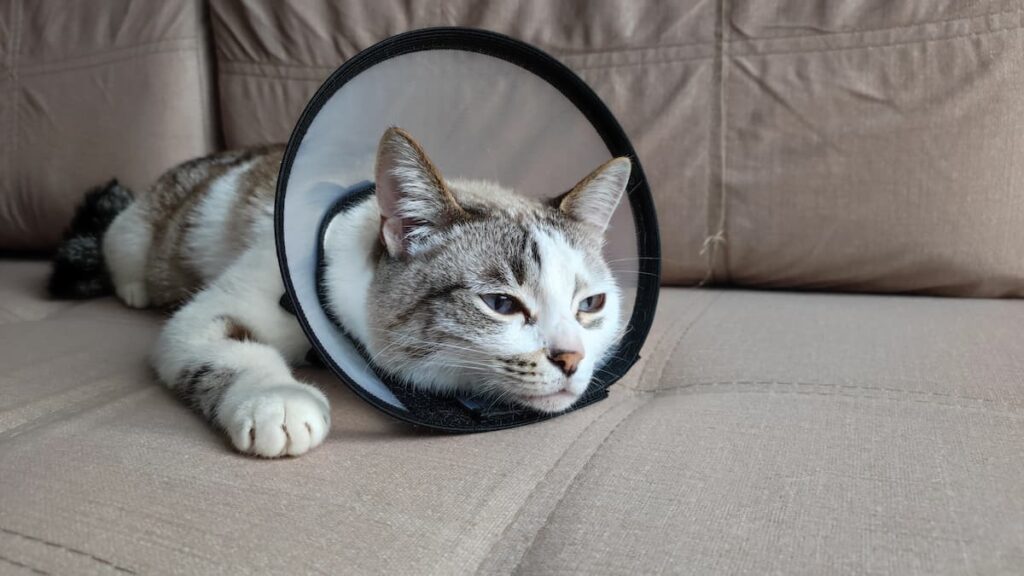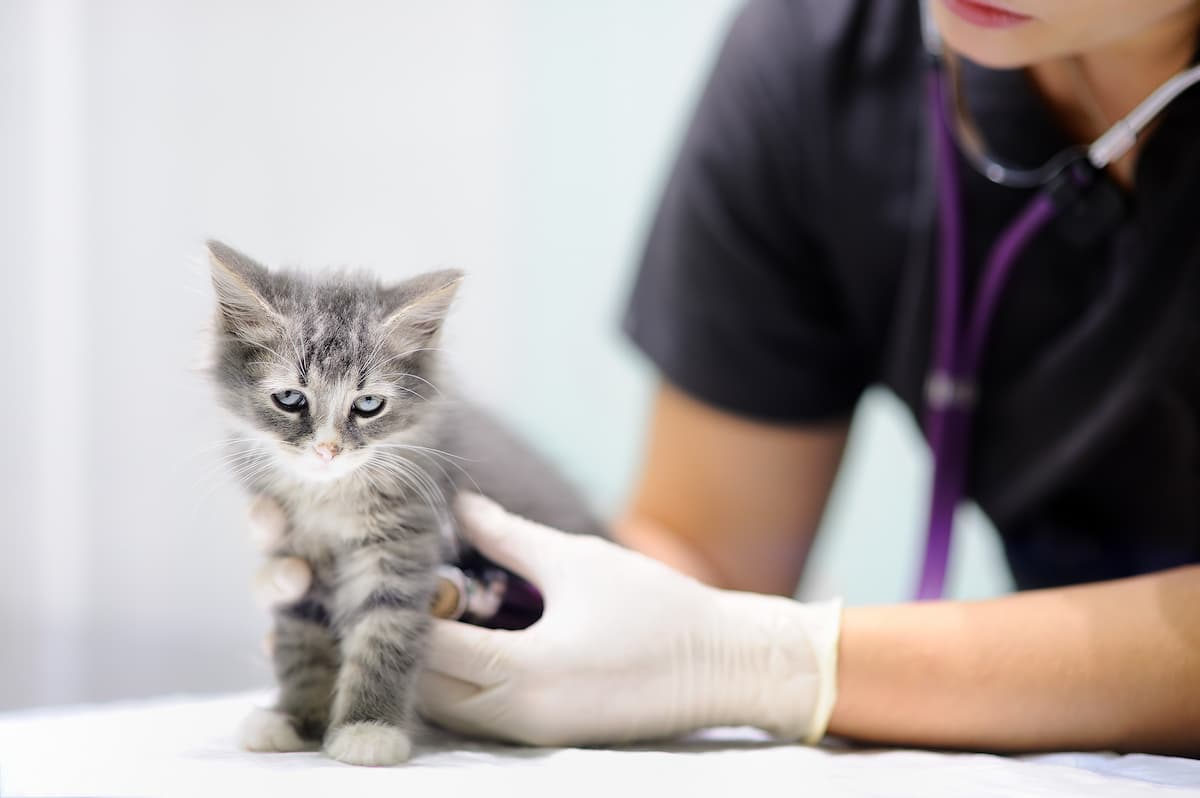Desexing, also known as neutering or spaying, is an important part of being a responsible cat owner. It helps control the number of cats and offers many health benefits. This article will explain what desexing is, the best age to do it, its advantages, and any risks involved.
What is cat desexing?
Desexing is a surgery to remove a cat’s reproductive organs. For male cats, this is called castration, where the testicles are removed. For female cats, it’s called spaying, which involves removing the ovaries and usually the uterus. This surgery stops cats from having kittens and can improve their health and behaviour.
What are typical cat desexing costs in Australia?
On average, you can expect to pay between $150 and $750 to spay or neuter your cat in Australia. Spaying, which involves more complex abdominal surgery, typically costs more than neutering.
For example, spaying a female cat can range from $245 in Victoria to $785 in New South Wales, while neutering a male cat ranges from $133 in South Australia to $380 in New South Wales. Additional costs might include preoperative blood tests, anaesthesia, painkillers, and antibiotics.
What’s the best age for a cat desexing procedure?
Most experts recommend cat desexing before they reach sexual maturity, usually around four to six months old. Some vets and shelters even perform early-age desexing before four months old and kittens can actually be safely desexed as early as 8 weeks old, so long as they weigh at least 1kg.
In fact, studies show a growing tendency for cat owners to desex their cats at a younger age.
Advantages of cat desexing
Research shows that desexing cats has many benefits and there are many reasons to spay or neuter your cat:
- It helps reduce the number of unwanted kittens, which decreases the stray cat population.
- Desexing prevents certain cancers and reproductive diseases. Female cats spayed before their first heat have a lower risk of developing breast cancer.
- Desexed cats are less likely to show mating behaviours like yowling, marking territory with urine, and roaming. This makes them easier to live with.
- Desexed cats often live longer because they are less likely to get diseases or be injured from roaming and fighting.
Are there any risks to desexing a cat?
While desexing is generally safe, there are some risks and side effects to consider:
- Like any surgery, there are risks with anaesthesia and surgical complications. These are rare when done by a skilled vet.
- Desexed cats might gain weight if their diet and exercise are not managed well. This can be controlled with a balanced diet and regular play.
- Some studies suggest a link between early desexing and urinary tract issues, but the evidence isn’t strong. The benefits of desexing usually outweigh these concerns.
- There’s a slight increase in the risk of hormone-related disorders, like diabetes, in desexed cats, especially if they become overweight. Keeping your cat at a healthy weight can help prevent this.
What happens when a cat gets desexed?
When a cat gets desexed, it undergoes a surgery performed by a veterinarian. Here’s what happens:
- The vet will first examine your cat to ensure it’s healthy enough for surgery. Your cat will then be given anaesthesia to make sure it doesn’t feel any pain during the procedure.
- For male cats, the vet will make a small incision in the scrotum to remove the testicles. For female cats, the vet will make an incision in the abdomen to remove the ovaries and usually the uterus.
- The vet will close the incision with stitches or surgical glue. The stitches may be dissolvable, or you might need to take your cat back to the vet to have them removed later.
- After the surgery, your cat will be monitored until it wakes up from the anaesthesia. The vet will ensure your cat is stable and recovering well before sending it home.
What to do to before the cat desexing procedure:
Preparing your cat for desexing can help ensure everything goes smoothly. Here’s what you should do:
- Make sure your cat has a health check-up before the surgery. This helps identify any potential health issues.
- Follow your vet’s instructions about feeding. Typically, you will need to withhold food from your cat the night before the surgery to prevent complications during anaesthesia.
- Ensure your cat has a secure and comfortable carrier for the trip to and from the vet.
- Make sure you have a plan for taking your cat to the vet and picking it up afterward. Arrange for someone to be home with your cat after surgery if possible.
How to take care of your cat after surgery
Caring for your cat after desexing is crucial for a smooth recovery. Here are some steps to follow:
- Create a quiet, comfortable space for your cat to rest. Keep it away from other pets and children for a few days.
- Check the surgical site daily for any signs of infection, such as redness, swelling, or discharge. If you notice any issues, contact your vet immediately.
- Prevent your cat from jumping or running for at least a week to avoid stressing the incision site.
- Your cat may try to lick the incision, which can cause infections. Use an Elizabethan collar (cone) if recommended by your vet to prevent this.
- Attend any follow-up appointments scheduled by your vet to ensure your cat is healing properly.

Are cats in pain after the desexing?
Cats may experience some discomfort after desexing, but severe pain is uncommon. Vets typically provide pain relief medication to manage any discomfort. Signs that your cat is in pain include hiding, loss of appetite, and reluctance to move. If you notice these signs, contact your vet for advice.
Do cats change after desexing?
Desexing can lead to some behavioural changes in cats, usually for the better. Here’s what you might notice:
- Desexed cats are often less aggressive and more relaxed.
- Your cat may be less inclined to roam far from home, reducing the risk of accidents and injuries.
- Male cats, in particular, are less likely to spray urine to mark their territory after being neutered.
- In general, desexed cats tend to be calmer and more focused on their human companions rather than seeking mates.
_________
Desexing your cat is an essential step in responsible pet ownership. It not only helps control the cat population but also provides numerous health and behavioural benefits for your feline. By understanding the process, preparing properly, and caring for your cat after surgery, you can ensure a smooth experience for both you and your pet. Desexing helps your cat live a healthier, happier, and longer life.
